Is it time to free ’em?!
With each wave of feminism comes different objectives, different outlooks, and more inclusion. I was a teenager during the start of the third wave, which featured angry riot grrls and women who wanted to take back the words used against women for centuries. It happened around the time the internet started to become readily available to the masses. Finally, exchange of feminist opinions and ideas could be traded in seconds.
We are nearing the end of third wave feminism, which has brought about a new interest in intersectional approaches to the plight of women across communities. No longer is the movement focused solely on the experiences of white, middle-class women. Instead issues of ethnicity, class, sexual orientation, gender, and more have moved to the forefront in the fight for equality between genders.
Unfortunately there is still a push back from men and women, still under the misconception that feminists are all angry, bitter, misandrists (lol, that’s a fake thing). Thousands of young women — those who are afraid of the connotations of the label — post selfies online with reasons why they “don’t need feminism” for reasons like they believe in “equality” or “my boyfriend treats me with respect.” Yeah.
As we are riding between the third and fourth waves of the movement, which is predicted to be even more inclusive and intersectional than the current wave, even a seasoned feminist like myself wrestles with certain aspects of the fight. Currently, I’m stuck working through the Free The N*pple (ironically, we’re not really allowed to even print the word because of the powers that be on the Internet) movement, made popular by celebrities like Kendall Jenner, Miley Cyrus, Amber Rose and more.
Is it really the intersectional feminist push that we need right now?
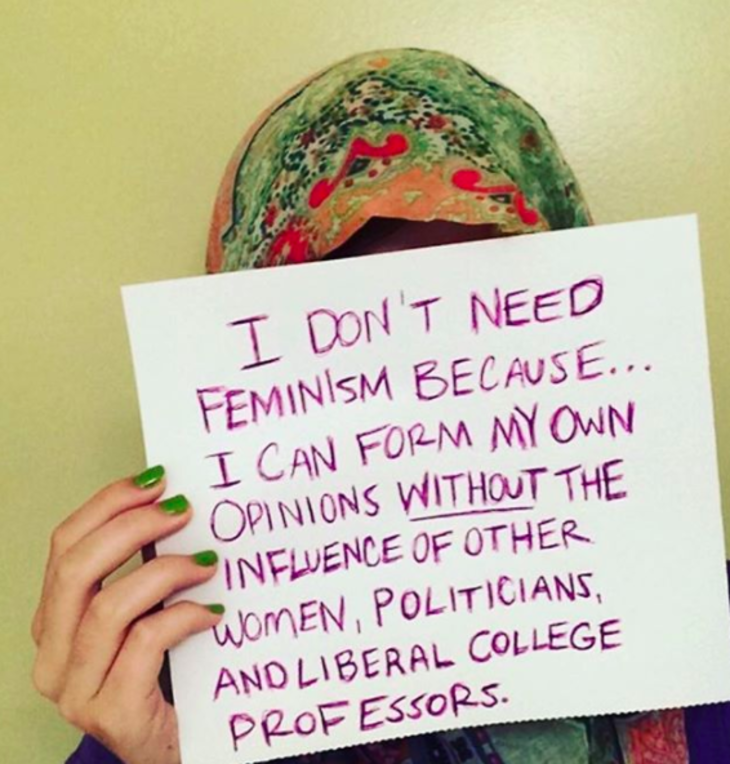
Source: Instagram @humanistx888
Free the N*pple

Credit: Anetlanda/Shutterstock
I don’t think I’ve ever seen a “Free the N*pple” supporter walking down the street. Not that I’m expecting to see topless women, but I mean that I haven’t see anyone wearing t-shirts or other supportive gear. Which begs the question of whether FTN is for us laypeople at all! Or, is it just for celebrities and other women of means who can afford to push boundaries with little backlash?
On the FreeTheN*pple site, you are greeted by a photo of happy, cheering white women (and a couple of men), the corner of site asks, “How far will you go for equality?”
I don’t know what this question means. I get that it is a challenge that’s suppose to intrigue the visitor, but are you asking if I will I march for women’s rights? Will I donate money to LGBTQ causes? Shall I cut one of my breasties off like the myth of the Amazon women so I can fight better in battle?
Overlaid in the center on the splashpge is:
“Equality
Empowerment
Freedom
It’s Time”
Click on “Why” and the site says: “Free the N*pple is a global campaign of change, focused on the equality, empowerment, and freedom of all human beings.”
Stemming from a 2012 feature film of the same name by Lina Esco, the movement’s website just seems to repeat itself on its various pages. It never mentions the word “feminism.” It never really mentions nips, except for in the context of the movement’s name.
Off to the kinda reliable Wikipedia to see what it has to say on the matter!
“The campaign highlights the general convention of allowing men to appear topless in public while considering it lewd or indecent for women to do the same, and asserts that this difference is an unjust treatment of women. The campaign argues that it should be legally and culturally acceptable for women to bare their [chests] in public.”
Okay, so that’s a bit more enlightening. But it doesn’t answer the real question at hand: Is “freeing the nips” really the symbolic movement we need to focus on right now?
Of course, FTN isn’t just about freeing the nip. The organization embraces many other feminist causes (they’re about to launch a push to get the ERA into the constitution), but from their social media activity, it does indeed seem that “normalizing” bare chests across genders is their main agenda. Of course, it’s hard to call a campaign that mostly consists of posting artsy Instagram photos and drawings alone an “agenda.”
Yes!
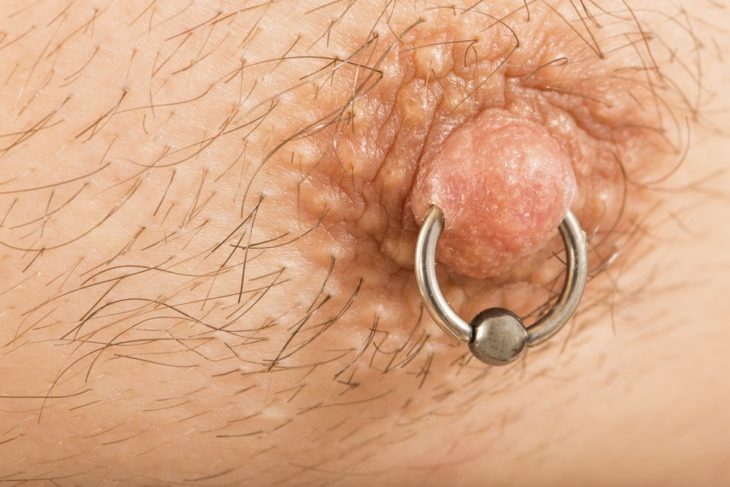
Credit: CatherineL-Prod/Shutterstock
And, look, their message isn’t entirely without merit. “The n*pple, what you can’t show, is what everyone has. But the jug part that everybody doesn’t, you’re allowed to show underbo*b. I’ve never understood the way it works,” Miley Cyrus said of her beliefs of the matter. And I get that. Totally.
For thousands of years we’ve had to look at countless male n*pples, while we’re only “allowed” to see a woman’s chest in public spaces in art projects. Hard stop. Everything else is inherently sexual (and sometimes people make the art sexual, too).
“It seems we are fine with [ta-tas] as long as they are constricted, contained, and nicely covered up ― or at least, on display only in a manner that is pleasing [to the male gaze] and related to sex,” Glynnis Macnicol wrote for a piece in Elle.
Macnicol makes an excellent point that gets to the heart of the movement (though, we had to do some digging to get there). Essentially, she suggests that too many people still think women’s exposure should only happen in a context that is pleasurable to cis-het male viewers. Her opinion (and that of FTN supporters) is that it’s this antiquated, misogynist notion makes female nips — and by extension, female bodies — about men’s comfort.
Rather than female nudity being about self-confidence or empowerment or just because we damn well want to be nakey, it’s about how our nakedness is viewed by the men around us.
That’s not cool. And, hey, I can get on board with changing that part of our culture. What I’m not sure about is whether FTN is really doing that.
No?
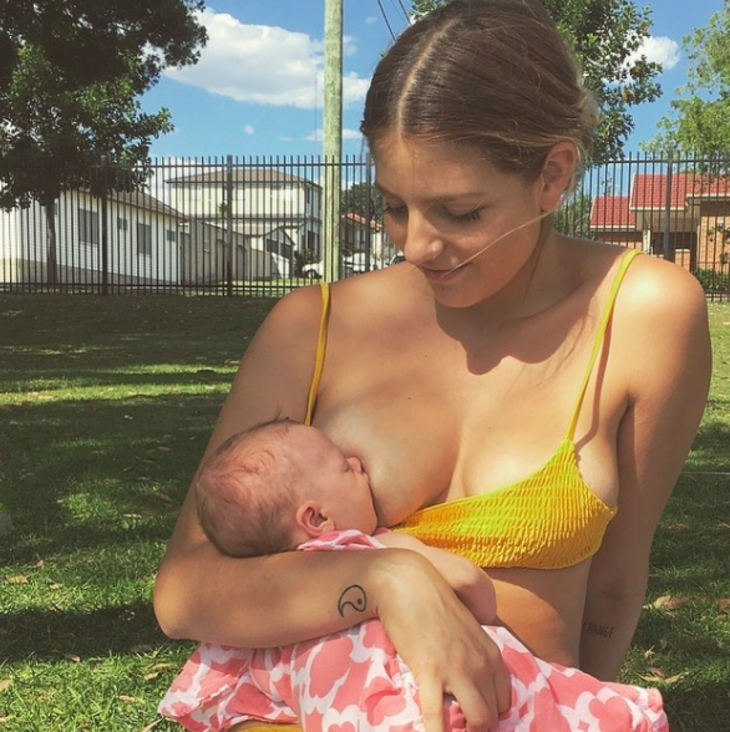
Source: Instagram @talisaandtribe
Idealism aside, it’s hard to imagine that pearl-clutching America is ready for women’s chests to be bared in the open. How many reports are there about people being offended by a woman breastfeeding her child? Even if she’s covered up, some people still sexualize the most natural thing a mother can do — what the organs are literally made and designed to do.
In Aug. 2017, a woman who was breastfeeding in London’s Victoria and Albert Museum was told to cover up after she “flashed a nanosecond of n*pple” in the museum’s courtyard.
The mom (@vaguechera) tweeted:
“‘I will throw you out of this museum with your naked brea*ts!’ ‘But I’m made of marble!’ ‘Oh sorry you’re fine then.’”
She then went through the museum, tweeting photos of priceless art that depicts topless women.
One mother was even breastfeeding her daughter at her grandmother’s house when the young mom’s own mother demanded her to cover up or get out.
Add on all the celebrities who get bullied for posting breastfeeding pics on Instagram, and we’ve got a serious problem. If this is what we’re up against, perhaps jumping right to “be topless always and whenever” is a bit of an overshot.
Superbreast
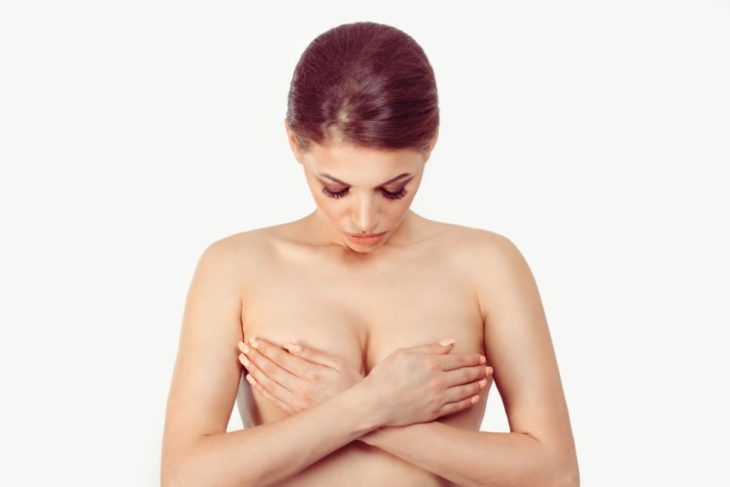
Source: Shutterstock
Sure, attitudes are changing. There are a few places in the good ol’ U.S. of A that have so-called Topfreedom laws on the books, but realistically, “freeing the nip” will change very little as far as objectification of women is concerned. I mean, look at Maine and New York City. You can strut around without a shirt there to no legal detriment, but personal attacks are sure to follow. You can’t even walk down the street in an oversize parka in NYC without getting harassed. (FYI, not saying that this is good or that we should change our dress to stop harassment. Just that it’s true and that’s a pressing concern when it comes to freeing our nips.)
I don’t think most of the U.S. is ready for women to walk around topless. While I’m sure most cis-het men wouldn’t mind it, I fear that it would bring about more catcalling and heckling and creeps following us around, which seems just as prevalent as ever. Freeing our n*pples isn’t going to stop the sexualization of women as objects — and their site doesn’t mention anything about that major fact.
Perhaps they assume if enough of us go topless, it will become normalized at an expedited speed. I don’t buy it.
I want FTN to succeed as much as the next girl — I’m all about everyone having their causes, — but I’m also a natural pessimist. This particular fight will take years, and I can’t help but think it’s not worth fighting right now. Not to mention it’s definitely not going to happen the way they’re going about it.
If women are still berated for breastfeeding in public without baring their nips, I can’t imagine that this particular social climate could ever be safe for topless women in the summertime. Ending predatory behavior and rape culture should be priority number one for the movement, if you ask me.
Priority two? To be more inclusive, and focus on issues that matter to women on a larger scale.
We can do it!
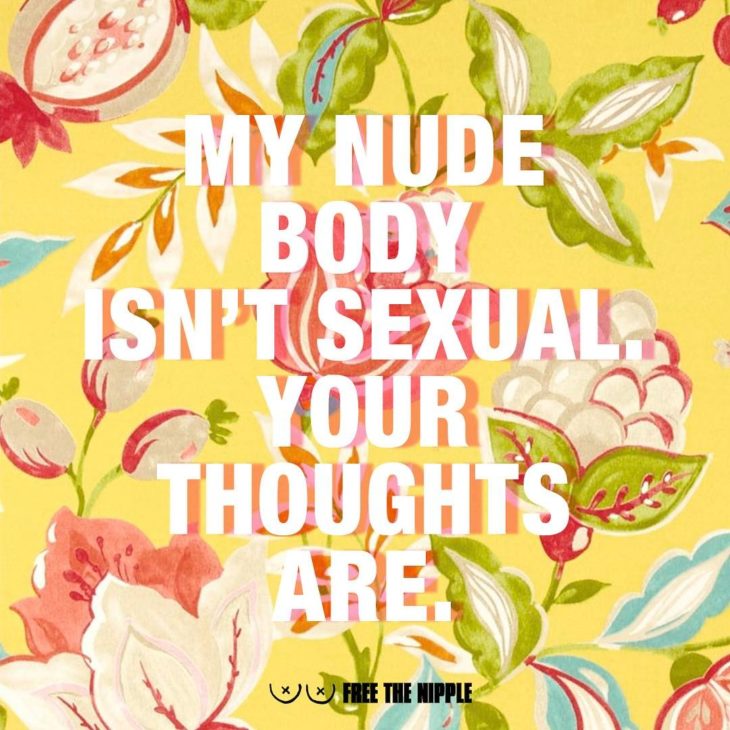
Source: Instagram
Julia Aldrich, may put it best in her piece “If You’re For Free the N*pple You Shouldn’t Call Yourself a Feminist” on Thought Catalog. She writes,
“The ‘Free the N*pple’ campaign, although employing a nature in the woman’s right to her body category, is failing to include most women. When taking a look at this campaign, it traces back to western women of higher class status that are usually young, thin, and white (as seen by photos at least). It doesn’t seem to include women of color, Muslim women, old women, etc. Of course I’d imagine these demographics would be welcome by other FTN activists, but the issue isn’t that. The issue here is that it alienates a lot of women in that the people who are normally willing to protest topless are usually thin and white and have access to Instagram on their iPhone.”
For me, I desperately need to see not only Aldrich’s observations on the need for inclusion, but Free The N*pple doing more to encourage tangible, social change from the ground up as well.
Yes, they say that they’re launching their ERA Campaign in the coming months, but I wish they did things like encouraging donations to women’s shelters. I want the movement to make sure more of us call out inequality and bullying when we see it (gender, ableism, racism, etc.), to push supporters to volunteer and/or donate to non-profits like those who try to stop sex trafficking or end child bride marriages. Even something as simple as buying a $5 box of tampons and giving it to a homeless woman is a far more meaningful act than than going topless in my book.
I want all women to have reproductive rights, I want to see the Brock Turners of the world burn, I want more trans rights, I want not one more woman to be circumcised. I want so many things for girls women around the world, thinking about all the issues and problems is mentally exhausting. Having the right to bare my ta-tas doesn’t matter to me right now because it literally can’t.
It’s a symbol in a time where we need active change on all levels in ways that bridge communities across the country. In short, I can’t care about freeing my nips because I have much bigger fish to fry.
SHARE this article.
Original by Jordie Lee
